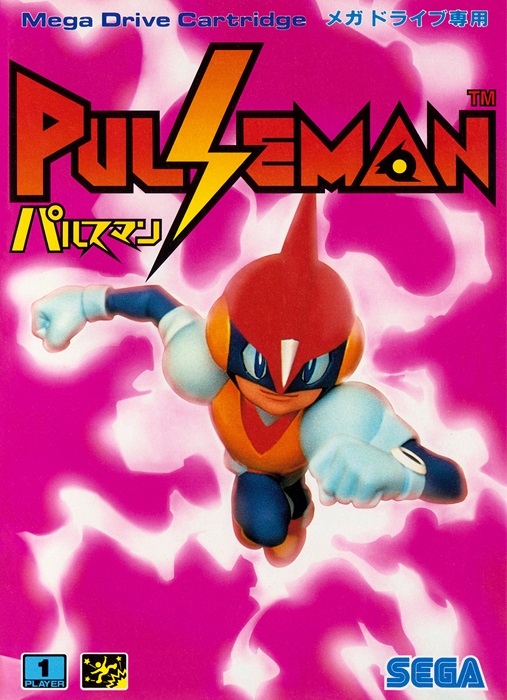This review is for the Nintendo Switch version of Pulseman, which is an emulation of the Mega Drive version available as part of a Nintendo Switch Online subscription.
If you were to try to capture everything about 1990s video games in a single piece of media, you’d get Pulseman. It’s a science fiction platformer about a little cyborg boy who can go into TVs and computers and fights robotic animals with electrical powers. It’s presented with retina-burning bright colours and flashing lights, crunchy digitised voices, and, naturally, a complete fascination with urban Tokyo. You could not make a more on-the-nose throwback to the ‘90s if you tried, and yet Pulseman isn’t a throwback; this came out in the ‘90s. It’s not doing any of these things to be ironic or to hearken back to a nostalgic time; it’s doing these things because robots and sci-fi are cool, and bright flashing colours look rad as heck, man. It is such an authentic and earnest game that I can’t help but love it, even when it does a lot of the things I hate about ‘90s platformers.
I guess I should get those things out of the way first. This came out on the Mega Drive during the years when Sonic the Hedgehog was a dominant force in the industry, so it definitely takes some influence from that. When you run in one direction uninterrupted for long enough you get a burst of speed, which, like in Sonic, makes it really hard to position yourself or respond to hazards in time, which sucks because, also like Sonic, the screen only shows you a really small section of the level at a time because the developers want you to see the cool pixel art they worked so hard on. Pulseman does seem to be aware of this problem, at least, because reaching top speed also charges up an attack which turns you into a ball of lightning that bounces off surfaces and is immune to most damage, so you can usually just pop that as soon as it’s ready to avoid the Sonic pitfall.
I really like the lightning move, when it’s being used properly. It’s really satisfying and fun to line it up and connect with enemies and it’s a very helpful and unique addition to certain platforming segments, but it’s also sort of inconsistent. I’m not sure if I missed out on some key bit of information by not seeking out a manual, but I was never clear on how long it actually lasts. Sometimes it seemed to go forever until I manually cancelled it, and other times it just fizzled out almost immediately. If I were to guess I would say this is a measure to stop you using it for areas it isn’t designed for, but it made me very distrustful of this core ability, which is never good.
Another thing that bugged me was the flashing lights. The ‘90s were not a good time to be epileptic and play games and my god this might be the worst example yet. Most levels have some segments where you enter a TV or some other device, and all of them are painful to navigate—strobing lights in every colour, flashing backgrounds that constantly move sideways, and even a level where you can barely see the actual platforms you’re supposed to stand on because they’re so similar to the funky background. These sections look really, really cool in screenshots, or from the other side of the room, but playing them up close is a good way to get a headache.
There are a few things I really did like about this game, though. The art style, when it isn’t trying to kill you with psychic blasts, is really outstanding. This is a high-end example of ‘90s pixel art, and you can tell the artists behind it really understood the medium and how to get it looking really slick in motion. On top of the actual art itself, the game has some very creative setpieces, like a level where the camera is from the perspective of an evil villain watching you on a monitor from his lair or a level where you enter an arcade shoot shooter and platform over spaceship—complete with a title screen and arcade UI. The presentation is really what you play this one for, and it’s really exceptional throughout. This is really as good as a game could look in 1994 and it’s aged almost flawlessly; it’s just a shame it had to turn my eye sockets into a pair of scorched craters.
